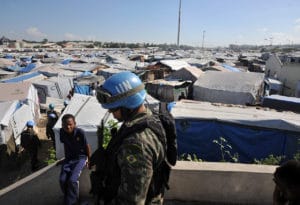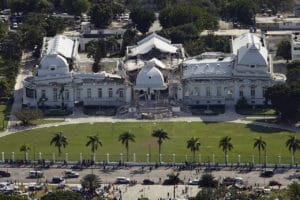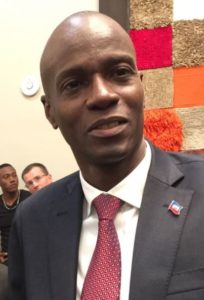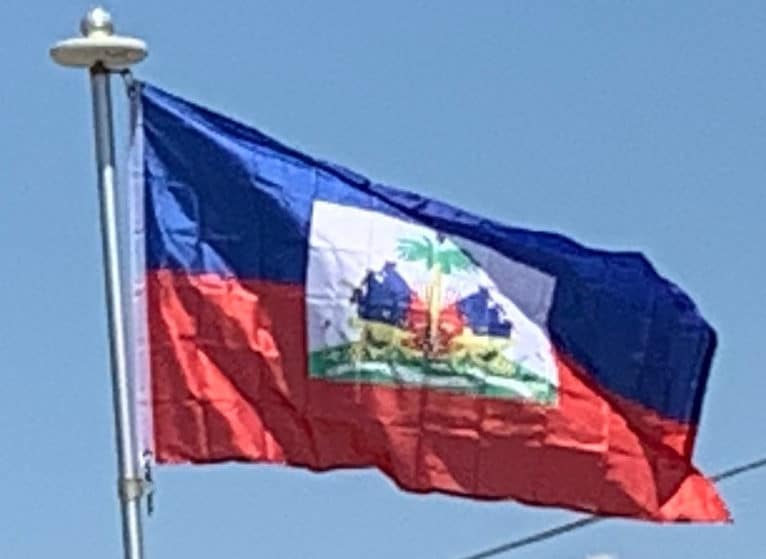
Howeever MINUSTAH proved controversial, as their at times heavy-handed approach to maintaining law and order and several instances of abuses, including the alleged sexual abuse of civilians, provoked resentment and distrust amongst ordinary Haitians. Boniface Alexandre assumed interim authority until 2006, when René Préval was re-elected President following elections.
Post-Aristide Era (2004–present):
Amidst the continuing political chaos, a series of natural disasters hit Haiti. In 2004 Tropical Storm Jeanne skimmed the north coast, leaving 3,006 people dead in flooding and mudslides, mostly in the city of Gonaïves. In 2008 Haiti was again struck by tropical storms; Tropical Storm Fay, Hurricane Gustav, Hurricane Hanna and Hurricane Ike all produced heavy winds and rain, resulting in 331 deaths and about 800,000 in need of humanitarian aid. The state of affairs produced by these storms was intensified by already high food and fuel prices that had caused a food crisis and political unrest in April 2008.
On 12 January 2010, at 4:53pm local time, Haiti was struck by a magnitude-7.0 earthquake.

This was the country’s most severe earthquake in over 200 years. The earthquake was reported to have left between 220,000 and 300,000 people dead and up to 1.6 million homeless. The situation was exacerbated by a subsequent massive cholera outbreak that was triggered when cholera-infected waste from a United Nations peacekeeping station contaminated the country’s main river, the Artibonite. In 2017, it was reported that roughly 10,000 Haitians had died and nearly a million had been made ill. After years of denial the United Nations apologized in 2016, but as of 2017, they have refused to acknowledge fault, thus avoiding financial responsibility.
General elections had been planned for January 2010 but were postponed due to the earthquake. Elections were held on 28 November 2010 for the senate, the parliament and the first round of the presidential elections. The run-off between Michel Martelly and Mirlande Manigat took place on 20 March 2011, and preliminary results, released on 4 April, named Michel Martelly the winner. In 2011 both former dictator Jean-Claude Duvalier and Jean-Bertrand Aristide returned to Haiti; attempts to try Duvalier for crimes committed under his rule were shelved following his death in 2014. In 2013, Haiti called for European nations to pay reparations for slavery and establish an official commission for the settlement of past wrongdoings. Meanwhile, after continuing political wrangling with the opposition and allegations of electoral fraud, Martelly agreed to step down in 2016 without having a successor in place. An interim president, Jocelerme Privert, then took office.

After numerous postponements, partly owing to the effects of another devastating hurricane, elections were eventually held in November 2016. The victor, Jovenel Moïse of the Haitian Tèt Kale Party, was subsequently sworn in as president in 2017. The 2018–2019 Haitian protests are demonstrations in cities throughout Haiti that began on 7 July 2018, in response to increased fuel prices. Over time these protests evolved into demands for the resignation of president Moïse.
Geography:
Haiti forms the western three-eighths of Hispaniola, the second largest island in the Greater Antilles. At 27,750 sq km Haiti is the third largest country in the Caribbean behind Cuba and the Dominican Republic, the latter sharing a 360-kilometre (224 mi) border with Haiti. The country has a roughly horseshoe shape and because of this it has a disproportionately long coastline, second in length (1,771 km or 1,100 mi) behind Cuba in the Greater Antilles.
